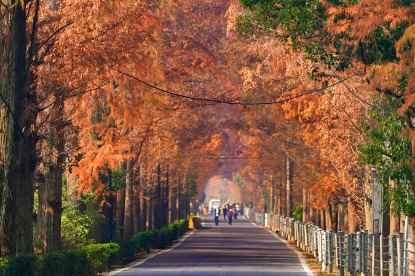Forest cities boosting eco-protection, incomes


Urbanization
China has one of the fastest urbanization rates in the world. The urban population is more than 800 million, and it is set to soar to 1 billion by 2030, according to the National Forestry and Grassland Administration.
In 2004, a project was launched to build a cluster of forest cities nationwide, with the aim of improving the environment in urban areas through greening.
The forest cities are expected to help lower the average air temperature, improve air quality, create noise barriers, generate habitats for wildlife and improve biodiversity in their regions.
Nearly 400 cities in 19 provinces and autonomous regions have been involved in the project so far, according to the administration.
By the end of last year, 138 cities had been certified as State-level Forest Cities, and the forested area in each rose by 13,333 hectares per annum in the past five years.
All 11 cities in Jiangxi have been designated State-level Forest Cities, making it the only province in the country where every city has that status. Last year, the province's forest coverage was 63.1 percent-nearly three times the national rate of 22.96 percent.
Air quality in the province also ranks among the best nationwide. The annual average density of PM2.5-particulate matter with a diameter of 2.5 micrometers or less-is 38.
Last year, the protection of forests and wetland brought benefits equivalent to 1.5 trillion yuan, according to the provincial Forestry and Grassland Administration.
"Jiangxi's forest cities have some unique characteristics, compared with other regions. As it is home to Poyang Lake, the country's largest body of freshwater, most of the greening projects have been built alongside rivers, branch lakes or wetland," said Zhu Bing, a researcher with the Jiangxi Greening Work Committee.
The construction plan for forest cities in Jiangxi is designed to reflect local culture. For example, as the province is the "cradle of the Chinese Revolution", maples, pine trees and daisies have been planted in the many martyrs' memorial parks to promote greening. When the maple leaves turn crimson in autumn, they convey both the "Red Spirit" and respect for the martyrs.
- International volunteers participate in blood donation event in Shanghai
- Wellington College China leads dialogue on collaborative education for the future
- China denounces Japan for hyping up regular military training
- Intl forum explores the integration of AI in basic education
- Beijing office backs Hong Kong court in Jimmy Lai conviction
- Xi's article on expanding domestic demand to be published




































